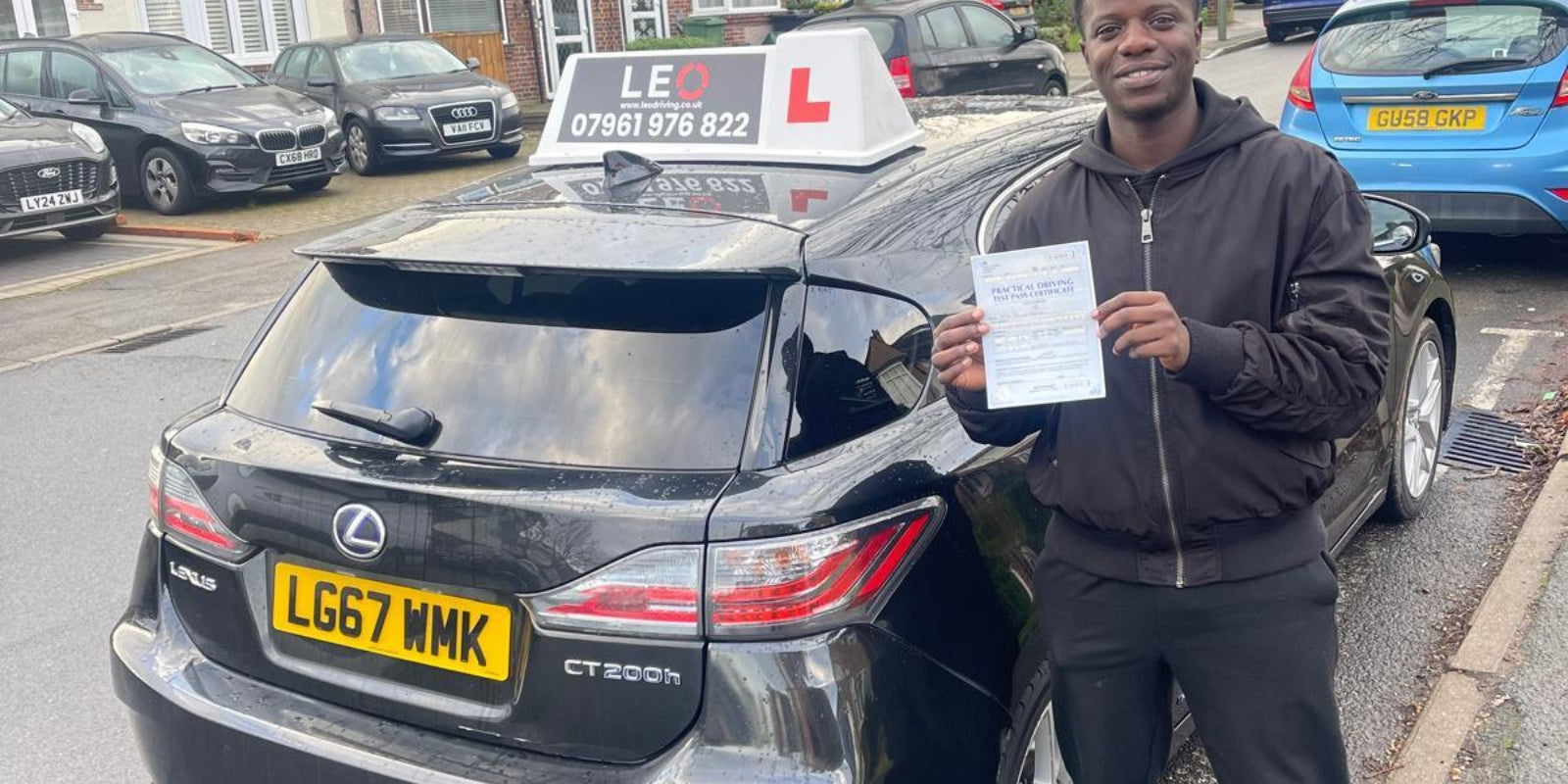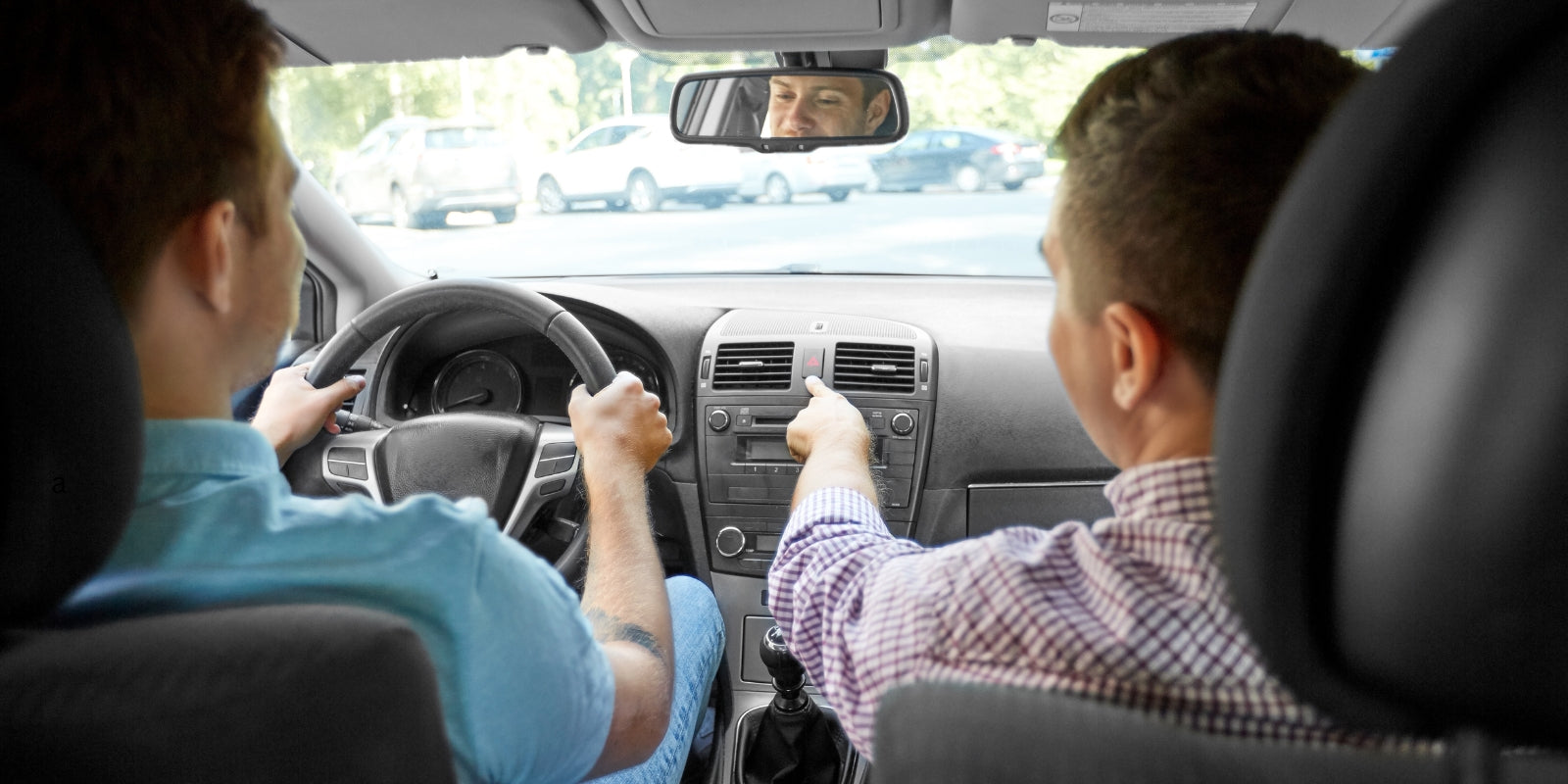What Will My First Driving Lesson Be Like?

Getting behind the wheel of a car can be both exhilarating and nerve-wracking. The excitement of the open road is tempered by the fact that, well... you might not know exactly what you're doing just yet! However, one thing that can help ease your mind is knowing what to expect during your first lesson.
In this guide, we’ll walk you through what will likely happen during your first driving lesson, from start to finish, and share a few tips to ensure everything goes smoothly.
Your First Driving Lesson
The length of your first driving lesson may vary depending on the tailored driving lessons your instructor plans, but it will typically last around two hours. This is enough time for your instructor to go over the basics, such as the cockpit drill, and even take you out on the road for a brief drive. Unless you’ve opted for a more intensive approach, it’s unlikely that the lesson will be any longer than this.
Your instructor will inform you of the exact lesson duration in advance and will have a plan in place, so you won’t need to worry about them being unprepared.
Getting Picked Up
At Leo Driving School, your instructor will pick you up from home, your workplace or at a designated location, depending on your preference and availability.
Once your lesson date and time are confirmed, it’s a good idea to double-check all the details to avoid any mix-ups. On the day of your lesson, your instructor might even arrive a bit early, so make sure you're ready ahead of time.
What You’ll Need to Bring for Your First Driving Lesson:
Provisional Licence: This is required for your first lesson to ensure you're legally allowed to drive.
Comfortable Shoes: Choose flat shoes with a thin sole so you can properly feel the car’s controls.
Glasses or Contact Lenses: If you need them, don’t forget to bring them, as your lesson will be cut short otherwise!
A Bottle of Water: You’ll be in the car for a couple of hours, so staying hydrated is important.
Lesson plan
Head somewhere quiet

Once your instructor greets you, they will guide you to their car. However, don’t expect to start driving straight away. In your first lesson, your instructor will focus on the basics and will likely only let you drive for a short time. After a few lessons, they’ll begin taking you on routes away from your home or workplace to more suitable areas for driving practice.
As you’ll be learning with a local driving instructor, they’ll know the best spots for learner drivers. For your first lesson, they’ll choose a quiet, residential area where you can drive without distractions. After that, they’ll ask you to switch places so that you can finally take the wheel.
Get Used to the Car
Before starting the engine, it’s important to familiarise yourself with the car. A large part of your first lesson will be spent adjusting to your instructor’s car—learning where the controls are, figuring out how to move the seat and mirrors, and understanding how everything works. While it might seem less exciting, this step is essential to help you learn to drive safely.
The Cockpit Drill
Once you're behind the wheel, your instructor will guide you through the cockpit drill. This will cover important safety procedures and explain how to adjust certain parts of the car to ensure you're in a safe driving position. The instructor will go through everything at a comfortable pace, but feel free to ask them to repeat anything you’re unsure of.
The cockpit drill, also known as DSSSM, is quite simple once you've done it a few times:
Doors: Before you start, make sure all the doors are securely closed.
Seat: Adjust your seat so you can reach the controls, have a clear view of the road, and position the headrest correctly.
Steering Position: The steering wheel should be adjusted to a comfortable distance, height, and angle, depending on your position.
Seatbelt: You must always wear your seatbelt before starting the car—this is a vital safety step.
Mirrors: Adjust your mirrors so you can see the road behind and check your blind spots.
Your instructor will demonstrate how to adjust all these elements and offer useful tips to make it easier for you in the future. Before you know it, you’ll be comfortable with all of them.
Car Controls
Next, you'll move on to the car’s controls. Your instructor will likely begin with the foot pedals. To remember which is which, use the acronym CBA for Clutch, Brake, and Accelerator. The instructor will explain the function of each pedal briefly. After that, they'll introduce the gear stick and handbrake.
Once you’ve got the basics down, your instructor will guide you through using the clutch. They’ll help you find the biting point and give you control so you can practice it repeatedly. You may spend a few minutes going back and forth between the biting point and releasing it—it’s great practice!
The lesson will also touch on the importance of checking your mirrors and blind spots before moving off. You may even get to try using the indicators! (We’ll hold briefly for a loud applause here.)
Start moving!

Worried you’ll finish your first driving lesson without actually getting to drive? Relax! Your driving instructor will make sure you have some time to slowly drive around a quiet residential area. While you’re unlikely to go beyond second gear, you’ll get a feel for using the accelerator, brake, and clutch pedals. You might also have a go at kerb-side parking.
Although your first lesson will only include a short amount of driving, rest assured that you’ll have plenty of time to practise in your next lessons.
Heading Back Home
Once you’ve stopped the car, applied the handbrake, and turned off the engine, your instructor will ask you to switch places. They will then drive you back home or to work. Before the lesson ends, they’ll stop to discuss how it went. While they won’t have as much feedback as they might after a few lessons, they’ll share tips and observations based on your performance so far.
When you’re back home, it’s time to relax—you’ve completed your first driving lesson! Congratulations—you’re one step closer to passing your driving test with Leo Driving School.
Tips for your first driving lesson

If our guide hasn’t eased your worries, here are some tips to help you get through your first driving lesson with ease.
Keep calm
Driving might be completely new to you, but that doesn’t mean you should panic or overthink your first lesson. Your instructor won’t be taking you on the motorway straight away—they’ll start with the basics to ease you into it. Plus, with a dual control car, they’ll be able to step in if needed, so there’s no need to worry about mistakes.
Remember, nobody’s perfect
Concerned your instructor might need to go over things more than once? That’s entirely normal. It’s their job to help you learn, and they’re experienced in teaching learners at all levels. You’re trying something new, so it’s okay to need extra guidance.
Don’t stress if you forget things
If you leave your first lesson feeling like you’ve forgotten everything, don’t panic. Skills like the cockpit drill or finding the biting point become second nature over time. Everyone learns at their own pace, so it’s perfectly fine to take your time mastering certain skills.
Don’t rush
While it’s natural to be eager to hit the road, your instructor won’t rush you. They’ll focus on the fundamentals first, ensuring you’re confident before moving on. This careful approach will save time in the long run.
No question is a silly question
Feeling unsure about something? Ask! Your instructor is there to help, so don’t hold back. Whether you’re clarifying a point or seeking additional tips, asking questions will make your learning experience smoother.
FAQs
What if I make a big mistake?
It’s your first lesson—mistakes are part of the process! Instead of worrying, focus on what your instructor is teaching. They’ve seen it all before, so they’ll handle any hiccups with ease.
I’m not sure driving is for me. Should I quit?
It’s too soon to decide after just one lesson! Some learners take to driving straight away, while others need time to build confidence. Give it a few lessons before making a decision.
Where will I get picked up?
It depends on what you’ve arranged with your instructor. With Leo Driving School, you can usually choose home, work, or another convenient location. If unsure, confirm with your instructor to avoid confusion.
I’m nervous about my first lesson. What should I do?
Take a deep breath! Nervousness is common among new drivers, and your instructor will understand. Relax and trust that they’ll guide you every step of the way.
Is there anything I can do to prepare?
Yes! Ensure you have your provisional licence and wear comfortable, flat-soled shoes. Reading the Highway Code can also help, as it provides valuable knowledge about road rules and driving basics.
Can I start lessons before passing my theory test?
Absolutely. Many learners find that combining lessons with theory test preparation helps reinforce their knowledge. Just make sure to pass your theory test before booking your practical.
Can I take lessons at night?
Yes! Evening lessons can be a great option if you have a busy schedule. Plus, driving at night will give you valuable experience. Just confirm your instructor’s availability for evening sessions.
How many lessons will I need to pass my test?
On average, learners need 40–50 hours of lessons to feel test-ready. However, this varies depending on individual progress. Your instructor will assess your skills and advise you accordingly.
Is it easier to learn in an automatic car?
Not necessarily! While some learners find it easier without a clutch, others adjust to manual driving just as quickly. It depends on your personal preferences and learning style.
How do I find a good driving instructor?
Choose a DVSA-approved instructor who meets the DVSA’s high standards. Leo Driving School pairs you with qualified, local instructors who will help you achieve your driving goals.
When should I book my driving test?
It depends on your progress and lesson frequency. Your instructor can advise you when you’re ready. At Leo Driving School, we help secure practical test dates that align with your training schedule.
Can I practise outside of lessons?
Yes, as long as you meet the legal requirements. Practising between lessons can boost your confidence and help you progress faster.
Now that you’re equipped with these tips, you’re all set to tackle your first driving lesson with Leo Driving School!

